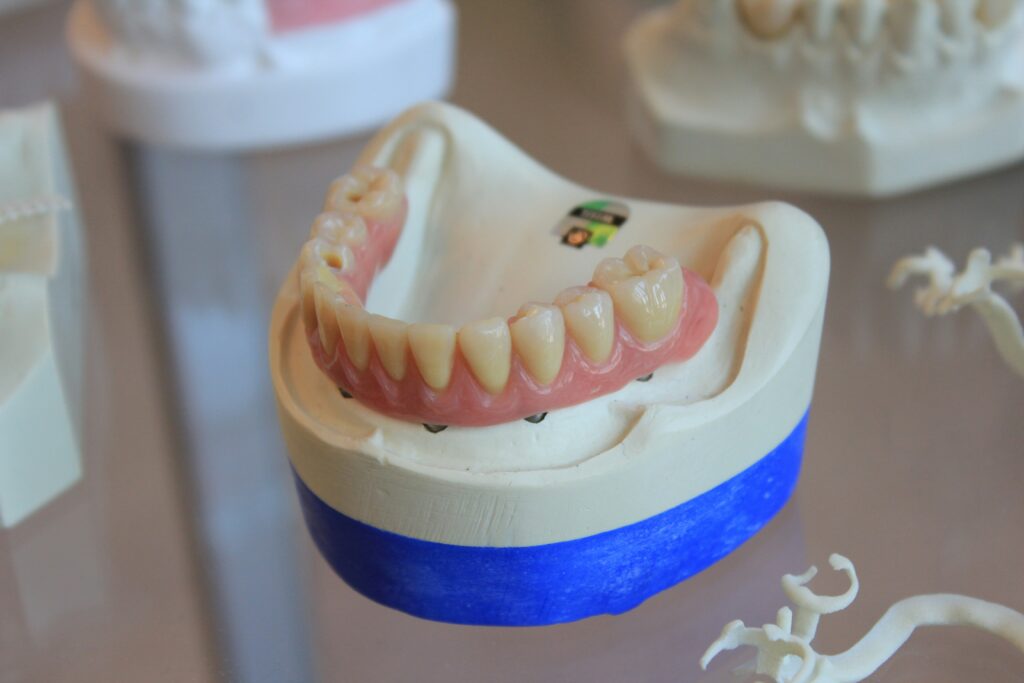Calcium phosphate materials are essential tools in modern dentistry, especially when it comes to bone grafting, implantology, and regenerative procedures. But not all calcium phosphate are created equal — they vary in composition, behavior, and clinical outcomes.
Understanding the differences between them can help clinicians choose the right material for specific cases, leading to better healing and patient satisfaction. Let’s dive into the key types of calcium phosphate used in dental practice what sets them apart.
Hydroxyapatite (HA)
What it is:
Hydroxyapatite is a naturally occurring mineral form of calcium phosphate that closely resembles the mineral component of human bone.
Key Features:
- Excellent biocompatibility
- Very stable and slow to resorb
- Provides strong, long-term scaffold for bone growth
Best used for:
- Cases where long-term volume maintenance is critical (e.g. ridge preservation)
- Patients needing a permanent scaffold
Limitations:
Because it resorbs very slowly, it may not be ideal in situations where fast bone remodeling is required.
Beta-Tricalcium Phosphate (β-TCP)
What it is:
β-TCP is a fully resorbable synthetic calcium phosphate material.
Key Features:
- Faster resorption rate compared to HA
- Supports natural bone remodeling
- Releases calcium and phosphate ions that stimulate bone growth
Best used for:
- Sites requiring quick integration and natural bone replacement (e.g. periodontal defects, small socket grafts)
Limitations:
May resorb faster than new bone formation in some cases if not properly indicated.
Biphasic Calcium Phosphate (BCP)
What it is:
BCP is a combination of HA and β-TCP, usually in a specific ratio (commonly 60% HA and 40% β-TCP).
Key Features:
- Balances stability and resorption
- Provides a long-lasting scaffold while encouraging natural bone replacement
- Adjustable properties depending on the HA/β-TCP ratio
Best used for:
- Implant sites where both volume maintenance and eventual remodeling are important
- Complex bone defects
Limitations:
Requires careful selection of the HA-to-β-TCP ratio based on clinical goals.
Amorphous Calcium Phosphate (ACP)
What it is:
ACP is a highly reactive, non-crystalline form of calcium phosphate.
Key Features:
- Rapidly converts to apatite when exposed to body fluids
- Highly bioactive
- Promotes fast mineralization
Best used for:
- Coatings on dental implants
- Remineralization therapies for enamel repair
Limitations:
Not typically used alone for bulk bone grafting due to its rapid transformation and lack of mechanical strength.
Brushite (Dicalcium Phosphate Dihydrate)
What it is:
A more soluble form of calcium phosphate compared to HA and β-TCP.
Key Features:
- Very fast resorption
- Suitable for cases requiring rapid bone turnover
Best used for:
- Defects needing quick space maintenance before secondary procedures
- Pediatric bone repair
Limitations:
Its quick resorption can sometimes outpace bone formation if not properly managed.
Final Thoughts
Choosing the right type of calcium phosphate material is crucial for the success of dental regenerative treatments.
Each form — whether it’s hydroxyapatite, β-TCP, BCP, ACP, or brushite — has its own strengths and ideal indications.
By understanding these differences, clinicians can tailor their material selection to match the biological needs of each patient and procedure, achieving faster healing, better integration, and more predictable outcomes.
Smart material choices lead to smarter clinical results.

